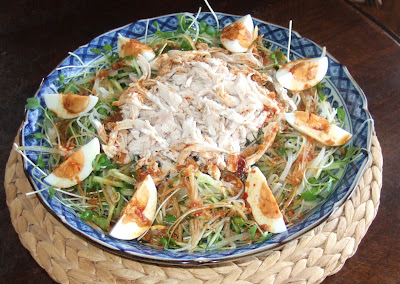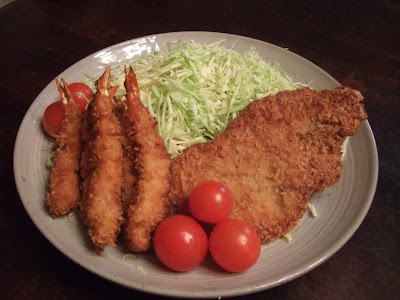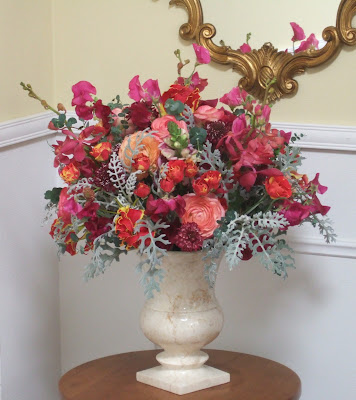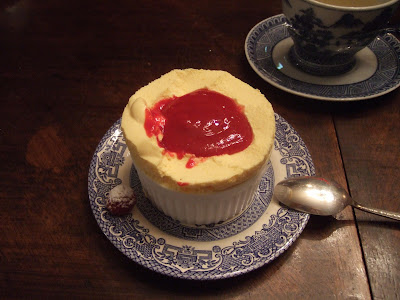Looking for a quick and easy meal? Try what I had for dinner a couple days ago, Spaghetti alla puttanesca, pork piccata and salad with Mozzarella di Bufala (Buffalo Mozzarella.) It only took me a mere half an hour to make all three of these dishes. It's easy and delicious. I added some broccoli to the puttanesca just because I had to use it up. I'm uploading the recipes for the pasta and piccata, so try it, it's good. I don't measure when I'm cooking and just eyeball everything, so the measurements is not precise :P
Spaghetti alla puttanesca
Serves 4 plus enough sauce for the piccata
Ingredients
Coarse salt
1.1lb pasta
4 tablespoons olive oil
7 medium cloves garlic, minced
¾ teaspoon crushed red-pepper flakes
4 anchovies, crushed or ⅓ teaspoon anchovie paste
3 tablespoons capers, drained
1 chicken bouillon cube, ½ if it's the large kind
⅓ cup Sicilian or Kalamata olives, pitted and coarsely chopped
¼ cup white wine
3 tablespoons coarsely chopped fresh flat-leaf parsley
1 tablespoon tomato paste
1 can of 28-ounce Italian plum tomatoes, chopped, reserving the juices
1 head of broccoli cut into florets (optional)
Directions
1. Bring a large pot of water to a boil. Add salt and pasta, and cook until pasta is al dente, follow the package instructions, cook pasta a minute less than the package says. Drain. If you're adding broccoli to the pasta, cook them with the pasta, broccoli only need about 4 minutes to cook, so add them when the pasta has 4 minutes remaining to cook.
2. While the pasta is cooking, heat olive oil in a large skillet over medium heat. Add garlic, red-pepper flakes, and anchovies. Cook, stirring, until aromatic, 1 to 2 minutes. Add capers, olives and wine, burn off the alcohol and add add tomatoes, reserved juice and bouillon. Bring to a boil. Lower heat to a simmer, and cook, stirring frequently, until slightly thickened, about 4 minutes. Reserve enough sauce for the piccata.
3. Stir pasta and broccoli into sauce. Cook, stirring until sauce clings to pasta, about 40 seconds. Stir in parsley. Serve immediately with piccata.
Piccata
Ingridients
salt and pepper
all-purpose flour
4 slices of pork short loin or tenderloin
1 tablespoon butter
1 tablespoon olive oil
4 tablespoons grated parmesean cheese
2 eggs beaten
Directions
1. Cut the edge of pork (the white part to prevent shrinkage) in several places. Salt and peper the loin and coat generously with cheese and flour, then coat with eggs.
2. Heat olive oil and butter in a large skillet over medium high heat. Add the pork and cook until golden brown on both sides. Serve immediately with the reserved puttanesca sauce.






































